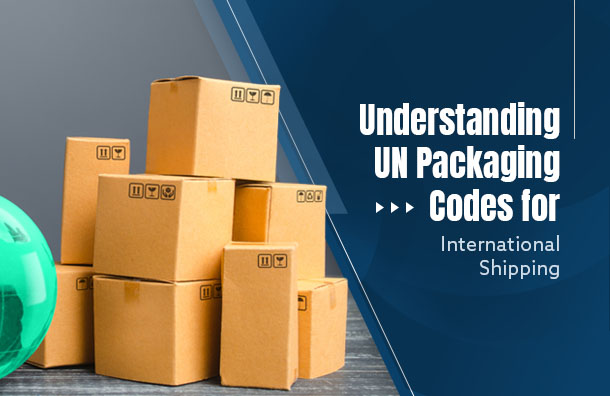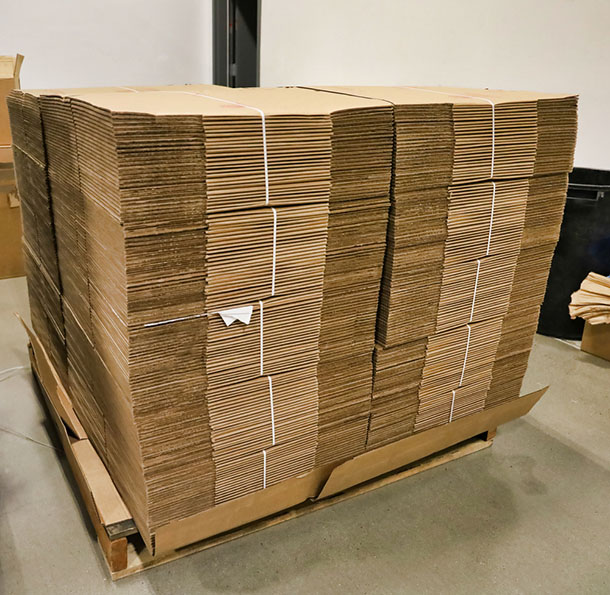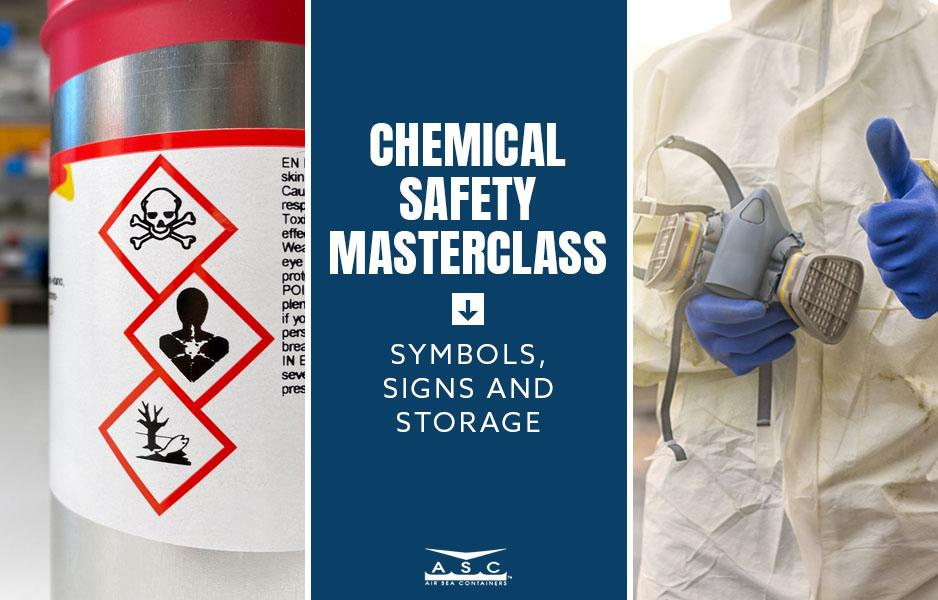Before we get started on the UN packaging codes, consider these points:
- UN packaging codes and regulations are essential for the transportation of dangerous goods (TDG).
- UN packaging codes identify the exact properties of transportation packaging and containers.
- UN-certified packaging isn’t enough; appropriate hazmat placards and signage must also be placed to identify the products transported.
One of the key elements of this document is the UN packaging code system, also referred to as the UN marking system. Knowing how to use and interpret these codes is essential for identifying and transporting dangerous goods safely.
How to Read UN Packaging Codes
The UN packaging code is composed of a string of numbers and letters, grouped into five sections.
All codes start with a circular symbol containing the letters “un,” written vertically and in lowercase. This unique identification symbol certifies the packaging has passed all relevant UN testing and certifications.
Learn How to Fill Out a Customs Form for International Shipping
Elements of the UN Packaging Code
The five sections of a UN packaging code indicate the following, from left to right:
- Packaging type identification code
- Packaging group level
- Depending on whether the items transported are solid or liquid, either gross mass or specific gravity and hydraulic pressure
- Year and country of manufacture
- PHMSA identification code

Section 1: Packaging type identification code
The first section of the UN packaging code is a string composed of two or three characters. The first character is a number code identifying the type of container used:
- 1: Drums or pails
- 2: Barrels
- 3: Jerrycans
- 4: Boxes
- 5: Bags
- 6: Composite packaging
- 7: Pressure receptacle (e.g., cylinders, tanks, containers filled with pressurized or compressed gas, etc.)
The second character is a letter code indicating the container material:
- A: Steel
- B: Aluminum
- C: Natural wood
- D: Plywood
- F: Reconstituted wood (e.g., laminated veneer lumber, hardboard, particleboard, etc.)
- G: Fiberboard (e.g., shipping cardboard, paperboard)
- H: Plastic
- L: Textile
- M: Paper
- N: Metals other than steel or aluminum
- P: Glass, porcelain, stoneware
If the packaging is a drum or pail of any type (1), a fiberboard box (4G) or a paper bag (5M), you may find a third character.
The third character is “1” if it possesses a closed, non-removable head or “2” for open, removable heads on drums and jerrycans. On fiberboard boxes, if the third character is “V,” this packaging is a 4GV box, which means it has passed UN hazardous materials transportation certifications and is suitable for carrying dangerous goods. For paper bags, the third character is “1” if it is a standard multiwall paper bag or “2” for water-resistant multiwall paper bags.
Commonly seen example codes:
- 1A1: Steel drum with a non-removable head, such as 217-liter UN-rated drums for transporting crude oil.
- 3H1: Plastic jerrycan with a plastic cap and a safety seal stopper.
- 4GV: UN-certified fiberboard box for transporting hazardous materials.
Section 2: Packing group level
The second section of the UN packaging code system is a string of characters containing one letter and at least one number. The letter indicates which UN packing group levels this container is certified to carry:
- X: Suitable for carrying products in packing groups I, II and III
- Y: Suitable for carrying products in packing groups II and III
- Z: Suitable for carrying products in packing group III only
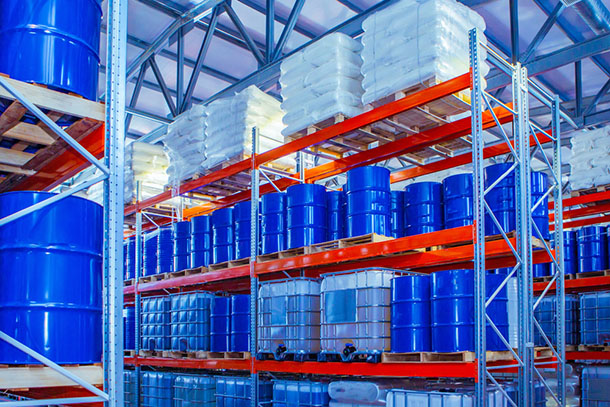
The UN packing group level refers to the relative danger level of the materials contained:
- Level III indicates the materials present a low danger level, such as camphor oil, diesel fuel, pine oil or turpentine.
- Level II indicates the materials present a medium level of danger, including octane, toluene, certain types of magnesium powder and lead nitrate.
- Level I is reserved for the most dangerous goods like hydrogen fluoride, ethyl ether, cesium, rubidium and liquid arsenic acid.
- Materials lacking a packing group level are not considered hazardous but may still be subjected to other UN regulations or packing recommendations.
The United Nations maintains a list of over 2,000 types of dangerous goods, corresponding packing group levels and other relevant information for storage or packing, such as quantity limitations.
Section 3: Gross mass, specific gravity and hydraulic pressure
The third section on a UN packaging code varies, depending on whether the packaging contains solid or liquid materials.
On packaging carrying solid materials, this section comprises a number followed by the letter “S” for solid. The number indicates the maximum gross mass in kilograms. For example, the number “8” means the packaging can contain a total of 8 kg.
Containers carrying liquids or compressed gases, instead, feature two sets of numbers.
The first set represents the maximum specific gravity this packaging is certified to hold. The specific gravity of a liquid is its relative density compared to an equivalent volume of water, expressed in grams per cubic centimeter (g/cc or g/cm3). For example, citric acid has a specific gravity of 1.665, which means a liter of citric acid weighs 1.665 kg. A container storing citric acid must possess a maximum specific gravity of 1.665 or higher.
The second set may follow the specific gravity on particular containers. This number represents the maximum hydraulic pressure the packaging is certified to withstand. The number is expressed in kilopascals (kPa).
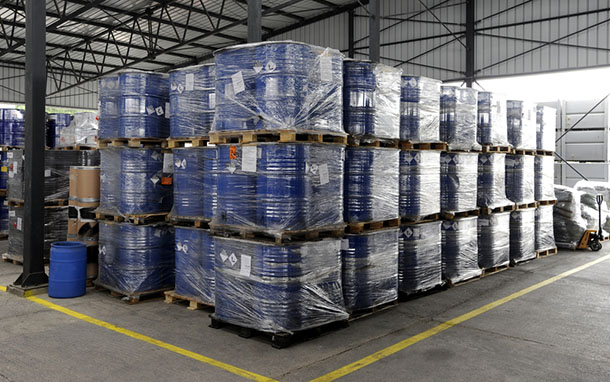
Examples:
- 430/S: Packaging capable of carrying up to 430 kg of solid materials.
- 1.7/300: Container capable of carrying a liquid or gas with a maximum specific gravity of 1.7g/cm3 and a maximum hydraulic of 300 kPa.
Section 4: Year and location of manufacture
The fourth section of a UN packaging code comprises the last two digits of the packaging’s year of manufacture, followed by a letter code indicating the country of manufacture.
For example, 21/USA means the packaging was produced in 2021 in the United States.
Section 5: PHMSA identification code
The last section of a UN packaging code is typically a unique identification code identifying a manufacturer registered with the Pipeline and Hazardous Materials Safety Administration (PHMSA).
Each registered packaging manufacturer is assigned a unique code. For example, UN-approved containers manufactured by Air Sea Containers will feature the M4733 code. The PHMSA never reassigns unique codes, even if the manufacturer ceases to produce UN-certified packaging or goes out of business.
Example of a Complete Code
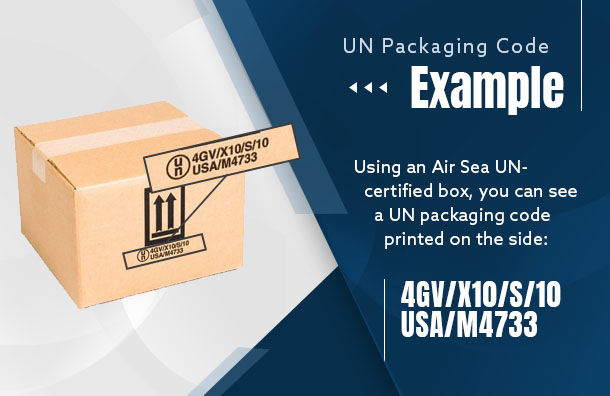
Using an Air Sea UN-certified box as an example, you can see a UN packaging code printed on the side: 4GV/X10/S/10/USA/M4733.
Breaking it down section by section, the code indicates:
- 4GV: This UN-certified fiberboard box is suitable for transporting hazardous materials.
- X: This is suitable for carrying products rated in UN packing groups I, II and III; in other words, it’s ideal for packaging most types of dangerous goods.
- 10/S: This can carry up to 10 kilograms of gross solid materials, including poly bags, air pillows for shipping and other extraneous items.
- 10/USA: This is manufactured in 2010 in the United States.
- M4733: It is manufactured by Air Sea Containers, Inc.
Use Air Pillows for Shipping to Secure Your Goods
Additional Considerations
It isn’t enough to meet the requirements listed on the UN packaging code. Depending on the materials you need to ship and on the transportation method, you may also need to follow additional requirements.
Package compatibility
One of the most critical factors for safe storage and transportation is selecting appropriate packaging materials and ensuring chemical compatibility between the product and the packaging.
Product package compatibility is the shipper’s responsibility. The wrong choices may lead to structural degradation, corrosion or permeation, rendering the packaging unsafe or unsuitable for use.
Hazard classes
All dangerous goods belong to one of nine broad categories called hazard classes. When shipping hazardous materials, it is crucial to know how to fill out a customs form for international shipping. The hazard class is a critical part of the declaration form, and failure to complete the document correctly could result in delays or shipment seizures.
When transporting hazardous materials, all UN-certified packaging must feature all appropriate labels on appropriate dot placards, in the correct position with the diamond tip pointed up and on all sides of each relevant packaging and each transporting vehicle.
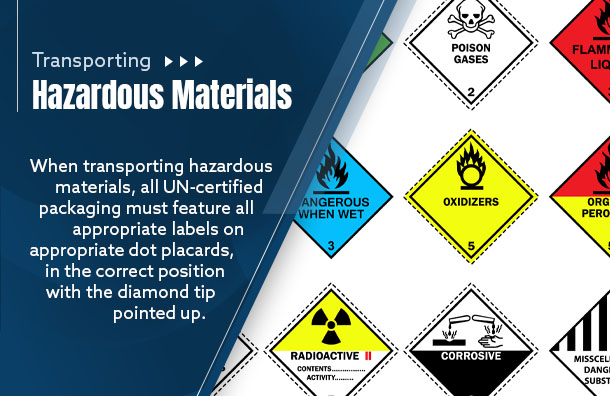
Specific hazmat shipping labels may feature a white rectangle with a black number. These are UN numbers identifying the particular product or substance transported. For example, a Class 3 placard featuring the UN number 1267 indicates the vehicle or container is transporting petroleum crude oil.
The nine hazard classes include:
- Class 1: Explosives. All Class 1 placards feature an orange label. Class 1.1, 1.2 and 1.3 placards typically feature an explosive symbol.
- Class 1.1: Explosive substances presenting a mass explosion hazard, such as black powder, dynamite or TNT.
- Class 1.2: Explosive substances presenting a projection hazard but not a mass explosion hazard, including hand grenades and certain types of detonating fuses.
- Class 1.3: Explosive substances presenting a fire hazard and either a minor projection hazard or a minor blast hazard or a combination of each. These substances include commercial-grade fireworks and sodium picramate.
- Class 1.4: Explosive substances presenting a minor blast hazard with no appreciable fire hazard like small arms ammunition and consumer-grade fireworks.
- Class 1.5: Explosive substances presenting a mass explosion hazard, but which are relatively insensitive and unlikely to detonate under normal conditions.
- Class 1.6: Explosive substances that do not present a mass explosion hazard and which are relatively insensitive.
- Class 2: Gases.
- Class 2.1: Flammable gases. Class 2.1 placards are red and feature a fire symbol. Examples of flammable gases include propane, acetylene and methane.
- Class 2.2: Non-flammable gases. Class 2.2 placards are green and typically feature a gas cylinder symbol. Examples of non-flammable gases include compressed air, nitrogen and helium.
- 2.2 Oxygen: Although oxygen is a Class 2.2 hazardous material, international regulations recommend using a distinctive yellow placard with an oxidizer symbol, distinguishing oxygen from other non-flammables.
- Class 2.3: Toxic or poisonous gases. Class 2.3 placards are white and feature a skull-and-crossbones symbol. Examples of toxic gases include hydrogen cyanide, chlorine and coal gas.
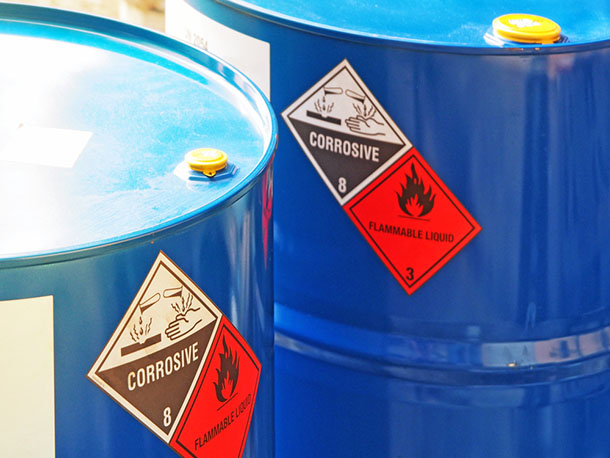
- Class 3: Flammable liquids.
This category encompasses all flammable gases, featuring a red placard and a fire symbol. Examples include crude oil, gasoline and fuel oil. - Class 4: Flammable solids.
- Class 4.1: General flammable solids: This category includes various substances presenting a severe fire risk. Class 4.1 placards are white with red stripes, featuring a fire symbol. Some common flammable solids include desensitized explosives, ammonium picrate and strike-anywhere matches.
- Class 4.2: Spontaneously combustible solids: Substances presenting a risk of spontaneous combustion when exposed to air. Class 4.2 placards are half-white, half-red, featuring a fire symbol. Some examples include wet cotton, activated carbon and all pyrophoric substances.
- Class 4.3: Dangerous when wet: Substances presenting a risk of combustion when exposed to water. Class 4.3 placards are blue, featuring a fire symbol. Examples include pure alkali metals, barium, calcium and potassium.
- Class 5: Oxidizing agents and organic peroxides.
- Class 5.1: Oxidizers. Class 5.1 placards are yellow with an oxidizer symbol, similar to oxygen placards. Examples include hydrogen peroxide, potassium nitrate and sodium chlorite.
- Class 5.2: Organic peroxides. Class 5.2 placards are half yellow, half red, featuring a fire symbol.
- Class 6: Toxic, poisonous and infectious material.
- Class 6.1: General poisonous materials. This category includes any toxic substance other than gases. Class 6.1 placards are white and feature a skull-and-crossbones symbol.
- Class 6.2: Biohazards. This category is reserved for biological hazards, such as bacteria, viruses and other infectious substances. Class 6.2 placards are white and feature the distinctive biohazard symbol.
- Class 7: Radioactive materials.
Class 7 placards are half yellow and half white, and they feature the well-known radioactive symbol. - Class 8: Corrosive substances.
This hazard class covers all corrosive substances, whether harmful to humans, metals or both. Class 8 placards are half white and half black and feature a corrosive symbol. - Class 9: Miscellaneous substances.
Class 9 substances are any hazardous materials that fall outside of the other categories. They include substances such as hazardous waste, asbestos, lithium batteries or marine pollutants. Class 9 placards are half plain white and half white with black stripes.
The Department of Transportation (DOT) CFR 49 document outlines additional guidelines regarding the transportation of specific combinations of dangerous goods, often referred to as a segregation table.
Depending on the specific types of materials being transported, certain combinations must be appropriately separated. For example, when transporting any Class 1 materials, no other Class of hazardous materials may be transported in the same vehicle or container.
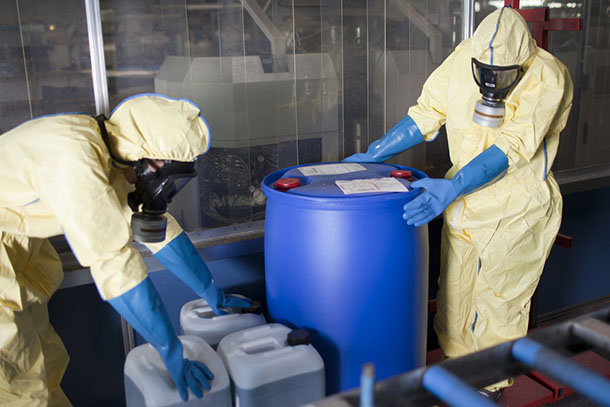
The Takeaway
UN packaging codes help identify the exact properties of the packaging and containers used to transport hazardous materials. When used in conjunction with other UN regulations, such as UN packing groups and hazmat placards, they help ensure the safe and secure shipping of all types of dangerous goods.
Air Sea Containers offers a large inventory of UN-certified packaging and containers, ranging from 4GV cardboard boxes to 1A1 and 1A2 drums, as well as certified regulatory markings. We also offer many other products for all of your labeling, packaging and shipping needs.
For any questions or requests for information, call us at (866) 272-9880 or send us an email at sales@airseacontainers.com.
Image Credits
Ody_Stocker/Shutterstock.com
bibiphoto/Shutterstock.com
FOTOGRIN/Shutterstock.com
Adam Gregor/Shutterstock.com
Andrii Yalanskyi/Shutterstock.com
nhumster/Shutterstock.com

